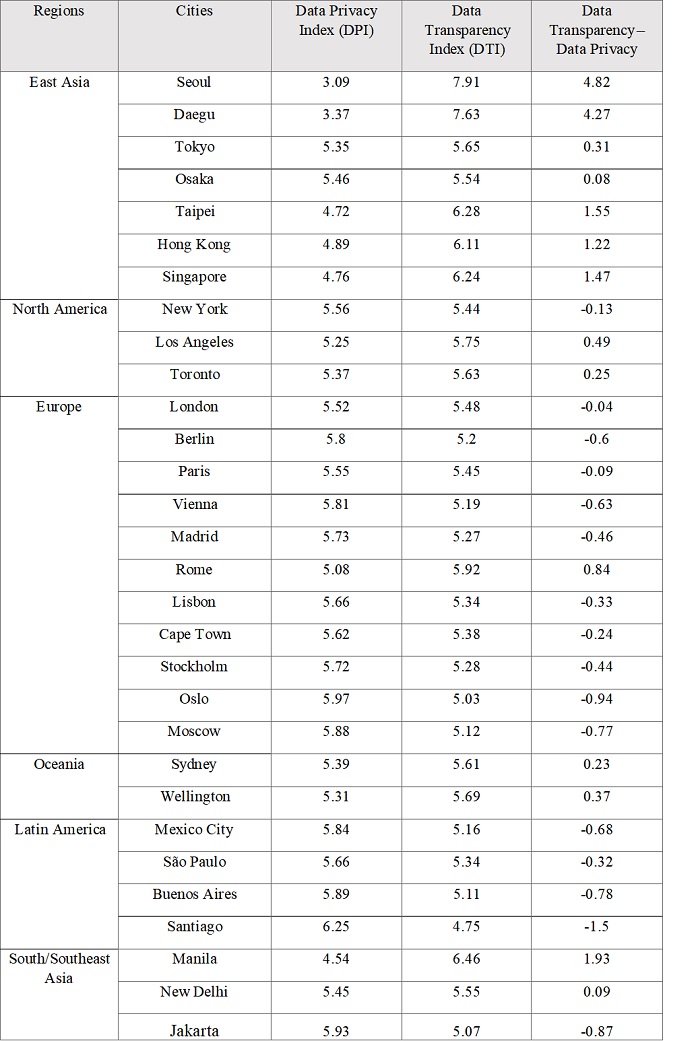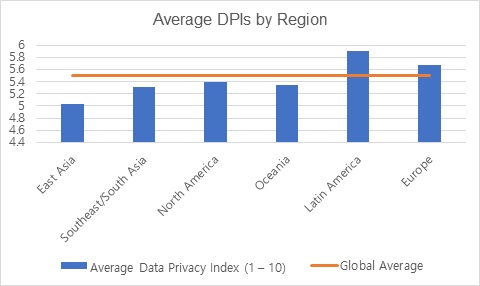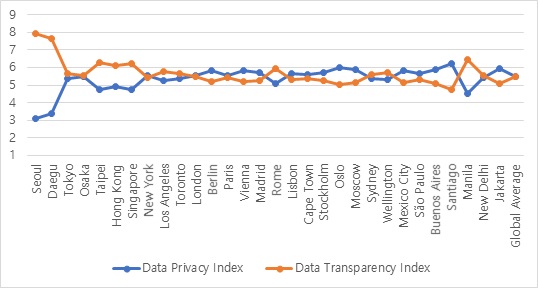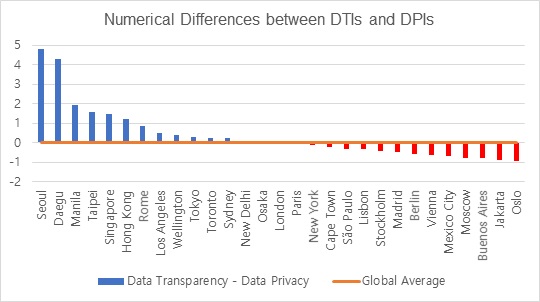Preference between Data Transparency and Data Privacy during
the COVID-19
1.
Background
With
the COVID-19 outbreak, many countries have been making contact trace data
public to fight against the virus, which has led to public concerns about
people’s right to privacy. On January 26th, 2020, the third
confirmed patient of coronavirus infection in South Korea was identified.
Accordingly, his movement history was revealed to the public to make people
with whom he had contact self-monitor, which was a decision made by the South
Korean government to prevent a further spread of the virus. However, after
revealing his movement history, his affair rumored around, and the patient was
told to have suffered from severe insomnia and anxiety, according to a hospital
official. There do have advantages on containing the COVID-19 epidemics, however,
non-institutionalized contact tracing may result in violating citizens’ privacy
and their basic rights.
2.
Research
Topic
In the middle of the COVID-19 pandemic, it
is of importance to balance the public health and private rights, and it is a
government duty to make appropriate health policies to satisfy its people. This
section will analyze how global citizens see data transparency and data privacy
and will look at if there is a general trend around the globe amid the crisis.
3.
Questionnaire
Used
Survey Question II-3: “The options below
show two divergent opinions about how to respond to the recent state of
emergency. On a scale from 1-10, please identify the point you feel most
closely matches your opinion. Revealing the movement history of infected people
in detail is essential for the safety of society. It is completely wrong to
treat infected people like public enemies.”
The answers consist of a 10-point scale,
with higher scores indicating an individual who emphasizes more on citizens’ privacy
and lower scores demonstrating a person who underlines the importance of contact
tracing.
4.
Major
Outcomes
Table 1: Data Privacy Index (DPI) and
Data Transparency Index (DTI)
by Citizens of 30 Global Cities

Respondents are asked to choose one score
to represent their ideas on the question, and the average scores of each city
indicate the Data Privacy Index (DPI). It demonstrates that citizens of a city consider
protecting personal rights to privacy important even amid the crisis, and the
higher the score is, the more and individuals think highly of the citizens’
privacy. Meanwhile, the reverse scaling was used in the Data Transparency Index
(DTI), which means that 11 minus DPI is the Data Transparency Index (DTI). Similarly,
the higher the DTI score is, the more a citizen highlights the government’s
decision to open the contact tracing to the public. Finally, the numerical differences
between the two scores were calculated in order to show which side a city is
putting more significance. To illustrate, the lower a numerical difference is,
the more citizens of the city underscore data privacy in the course of the
pandemic crisis.
Table 2: Average Data Privacy Index
(DPI) by Region
|
Regions
|
Average Data Privacy Index (1 – 10)
| |
East Asia
|
5.03
| |
Southeast/South Asia
|
5.31
| |
North America
|
5.40
| |
Oceania
|
5.35
| |
Latin America
|
5.90
| |
Europe
|
5.67
|
The scores in the
table are the average Data Privacy Index (CQI) of the global citizens by region. To be
specific, the lowest score of 5.03 was rated by East Asian citizens on average.
It exhibits that people in this region tend to deem that the contact tracing
instead of citizens’ privacy is more vital at a time of crisis. On the
contrary, the highest score of 5.90 was rated by Latin American citizens, which
illustrates that people here highlight the most on citizens’ rights and privacy.
Figure 1: Bar Graph of Average Data
Privacy Index (DPI) by Region

Figure 1 is the
visualized graph of Table 2, and the orange line is the world average Data Privacy
Index (CQI). That Latin American
and European citizens think highly of the citizens’ privacy is evidenced by the
figure. On the other hand, revealing the specific information on the history of
movements of individuals infected with the COVID-19 coronavirus is highly
emphasized by East Asian citizens, followed by South/Southeast Asian, Oceanian,
and North American people. For further detailed analysis, let’s see each city’s
score of CQI and GQI.
Figure 2: Line Graph of Data
Privacy Index (DPI) and Data Transparency Index (DTI)

This figure is a visualized version of
Table 1, and the most
outstanding finding of Figure 2 is that South Korea, represented by Seoul and
Daegu, shows a huge gap between protecting citizens’ privacy and making contact
tracing data public. It means that South Korean citizens generally regard that data
transparency and openness as vital facing COVID-19 pandemic. Meanwhile, other cities
are holding divergent opinions regarding data transparency and data privacy.
Figure 3: Bar Graph of Numerical Difference
between Data Privacy Index (DPI) and Data Transparency Index (DTI)

The differences
between DTIs and DPIs are drawn as a bar graph, shown in Figure 3. The orange
bar indicates the global average difference score (0.00). Cities with negative
numerical differences are marked with red bars, indicating citizens of that
city prefer guarding citizens’ privacy; yet, cities with blue bars express that
revealing the movement history is crucial to overcome the coronavirus. As shown
in Figure 3, all East Asian and Oceanian cities think highly of the epidemiological
investigation of infectious people, while all Latin Americans are laying stress
on people’s privacy rather than revealing patients’ movement history. Finally,
European, North American, and South/Southeast Asian citizens are presenting various
points of view.
5.
Summaries
and Further Tasks
a.
Data
analysis shows contradicting views on data transparency and data privacy by
global citizens.
b.
East
Asian, Oceanian, South/Southeast Asian (Manila, New Delhi), European (Rome),
North American (Los Angeles, Toronto) prioritize the revealing the information
of contact tracing during the crisis since the numeric difference scores of Data
Transparency (DTI) and Data Privacy Index (DPI) are positive. On the other
hand, Latin American, European (except Rome), North American (New York), Southeast
Asia (Jakarta) prefer protecting the privacy, since the numeric difference
scores of the two indexes are negative.
c.
European
and Latin American average DPIs are higher than the global average, indicating
these regions are more accenting on data privacy even amid the crisis.
d.
The
study is limited to descriptive research, and therefore, a more detailed
explanative investigation is required to further understand the global citizens’
consciousness presented above. For instance, why citizens in South Korea highly
advocate contact tracing other than other cities in the world? What factors
made Latin America and Europe put emphasis on citizens’ privacy?
|